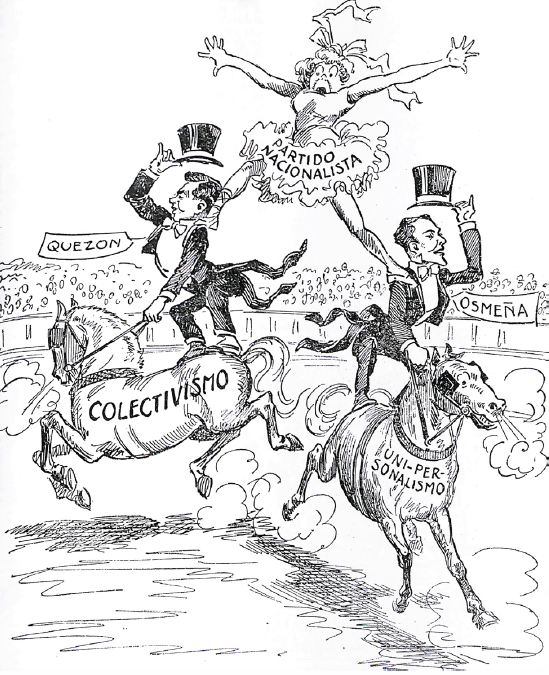#TodayinHistory in 1878, Sergio Osmeña, 4th #PH President (official roster), and 2nd President of the PH Commonwealth, was born in Cebu City. As a journalist, turned Filipino political leader, his was a long track record from PH Revolution to Post-#WWII. (THREAD) #history 

Hailing from #Cebu from a wealthy Chinese mestizo family, Osmeña studied in @uscphilippines, then at @LetranOfficial where he became acquainted w/ ML Quezon, Juan Sumulong & Emilio Jacinto, and pursued Law in @UST1611official. At 1st he was sympathetic to 🇪🇸 but his views changed
He contacted Aguinaldo in Oct 1899 at the heat of #PH-US War, as emissary of Cebuanos but observed that defeat for PH was imminent. He went back to Cebu, studied English, & began participating in the American civil gov system that the U.S. est. in PH, to push for independence.
From 1907 to 1916, Osmeña became the highest Filipino official as Speaker of the Philippine Assembly. W/ the Jones Law passage in 1916, the Philippine Commission was reorganized into #PH Senate, & Quezon overtook him as Senate President.
https://twitter.com/indiohistorian/status/1284073473531195392?s=20
The soft rivalry bet the 2 went fever pitch in 1922, splitting the dominant Nacionalista Party into two. Quezon broke away & formed Nacionalista Colectivista, arguing that Osmeña was dictatorial when governing should be by a "collective." Osmeña denied the allegation. 

In 1922, Osmeña left the Speakership, ran and got elected for the Senate. It marked an end to his preeminent leadership. Osmeña worked w/ Quezon w/ the Independence Missions, campaigning for #PH independence in the US Congress. They succeeded. 
https://twitter.com/indiohistorian/status/1242401328812322818?s=20

Sergio Osmeña served as VP (1935-1944). His term was supposed to have ended in 1943, but due to the Japanese occupation of #PH, both Quezon & Osmeña's terms were extended by the U.S. Congress. He assumed the presidency upon Quezon's death in 1944. 

https://twitter.com/indiohistorian/status/1289509461954932737?s=20


His greatest moment was when he as President, together w/ Gen. D. MacArthur & Allied forces, landed in Leyte, on 20 Oct 1944, reestablishing #PH gov on Philippine soil. He ran for the presidency once again in 1946 but was defeated by Manuel Roxas.
https://twitter.com/indiohistorian/status/1185829929998372864?s=20
*Photos from Presidential Museum & Library
- Candid photo of Pres. Sergio Osmeña from LIFE Magazine, 1944
- Osmeña, Quezon, Roxas, in the U.S., early 1930s
- Osmeña takes his oath as VP, 1935
- Osmeña takes his oath as President, 1944
*Editorial cartoon, Philippines Free Press.
- Candid photo of Pres. Sergio Osmeña from LIFE Magazine, 1944
- Osmeña, Quezon, Roxas, in the U.S., early 1930s
- Osmeña takes his oath as VP, 1935
- Osmeña takes his oath as President, 1944
*Editorial cartoon, Philippines Free Press.
• • •
Missing some Tweet in this thread? You can try to
force a refresh











